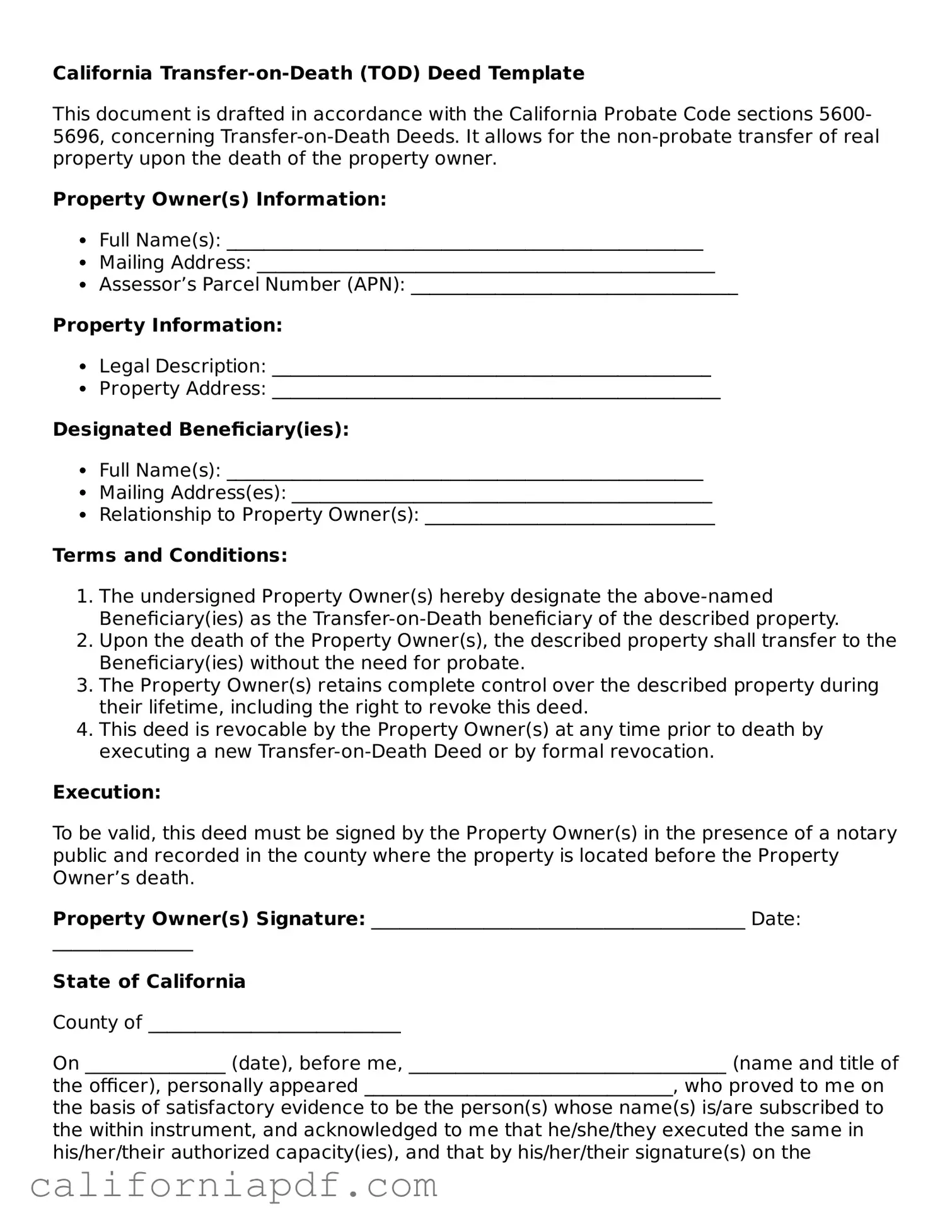California Transfer-on-Death (TOD) Deed Template
This document is drafted in accordance with the California Probate Code sections 5600-5696, concerning Transfer-on-Death Deeds. It allows for the non-probate transfer of real property upon the death of the property owner.
Property Owner(s) Information:
- Full Name(s): ___________________________________________________
- Mailing Address: _________________________________________________
- Assessor’s Parcel Number (APN): ___________________________________
Property Information:
- Legal Description: _______________________________________________
- Property Address: ________________________________________________
Designated Beneficiary(ies):
- Full Name(s): ___________________________________________________
- Mailing Address(es): _____________________________________________
- Relationship to Property Owner(s): _______________________________
Terms and Conditions:
- The undersigned Property Owner(s) hereby designate the above-named Beneficiary(ies) as the Transfer-on-Death beneficiary of the described property.
- Upon the death of the Property Owner(s), the described property shall transfer to the Beneficiary(ies) without the need for probate.
- The Property Owner(s) retains complete control over the described property during their lifetime, including the right to revoke this deed.
- This deed is revocable by the Property Owner(s) at any time prior to death by executing a new Transfer-on-Death Deed or by formal revocation.
Execution:
To be valid, this deed must be signed by the Property Owner(s) in the presence of a notary public and recorded in the county where the property is located before the Property Owner’s death.
Property Owner(s) Signature: ________________________________________ Date: _______________
State of California
County of ___________________________
On _______________ (date), before me, __________________________________ (name and title of the officer), personally appeared _________________________________, who proved to me on the basis of satisfactory evidence to be the person(s) whose name(s) is/are subscribed to the within instrument, and acknowledged to me that he/she/they executed the same in his/her/their authorized capacity(ies), and that by his/her/their signature(s) on the instrument, the person(s), or the entity upon behalf of which the person(s) acted, executed the instrument.
I certify under PENALTY OF PERJURY under the laws of the State of California that the foregoing paragraph is true and correct.
Witness my hand and official seal.
______________________________________ (Seal)
Notary Public
